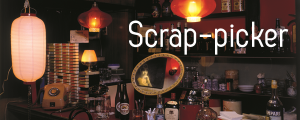A ‘Press breakfast’ doesn’t take place at breakfast time. So last tuesday – at 10.30 a.m. – I turned up to the sneak preview of Howard Greenberg’s exhibition at the Henri Cartier-Bresson Foundation in Paris.
The exhibition is a selection from Greenberg’s own collection. Some of his favourites, as he explains in an interview with Sam Stourdzé (the director of the Elysée Museum in Lausanne) have been sold, and some he has been able to buy back. Such is the paradoxical nature of being both a collector and gallery-owner, where what you must sell is exactly what you want to keep. Two very different hats.

For the first time is his career Greenberg is exhibiting in Europe, both here in Paris and in Lausanne, Switzerland. His career as a collectioner started unexpectedly around thirty years ago, as the result of not being able to sell one of his favourite photographs by Strauss. He ended up keeping the piece, and it marked the start of his collection. Now he has accumulated some truly incredible prints, many of which are instantly recognisable: from the workmen sitting astride a metal beam on the Rockefeller Centre in New York (Lunch Atop a Skyscraper, Ebbets, 1932), to the sobering Murder of a Vietcong by Saigon Police Chief by Eddie Adams, 1968. Other shots that held my attention in particular were Dennis Stock’s James Dean trudging through the rain with a cigarette, W. Eugene Smith’s Three Generations of Welsh Miners (1950) and Klein’s photograph of Evelyn Tripp (1958). Mid Twentieth-century American (and European) history is captured on silver prints over the two floors of the gallery.
Because this is a collection built up over Greenberg’s life, it is highly personal. Each photograph has its own two-dimensional context, the story of the photo, and the story of its acquisition. His own life has clearly influenced the prints he buys: from his fascination with Humanist photography (or what Greenberg prefers to call Real World photography), the love of urban New York, to the increase of photographs with children in – corresponding to the expansion of his own family.

The attention to detail and sensitivity behind the selection shows Greenberg’s experience in the industry, helped by a great team of curators, and it is a real priviledge to be granted access to around a hundred of his black-and-white or sepia photographs.
It is appropriate that Greenberg should be showing at the Foundation of Henri Cartier-Bresson (1908-2004). Considered the pioneer of modern photography, in particular the street, or candid photography style, Greenberg’s exhibition brings Cartier-Bresson’s statement to life: “To take a photograph is to hold one’s breath when all faculties converge in a face of fleeing reality (…) It is putting one’s head, one’s eye, and one’s heart on the same axis.”

(Howard Greenberg’s collection exhibits @ Fondation HCB until April 21st)

















